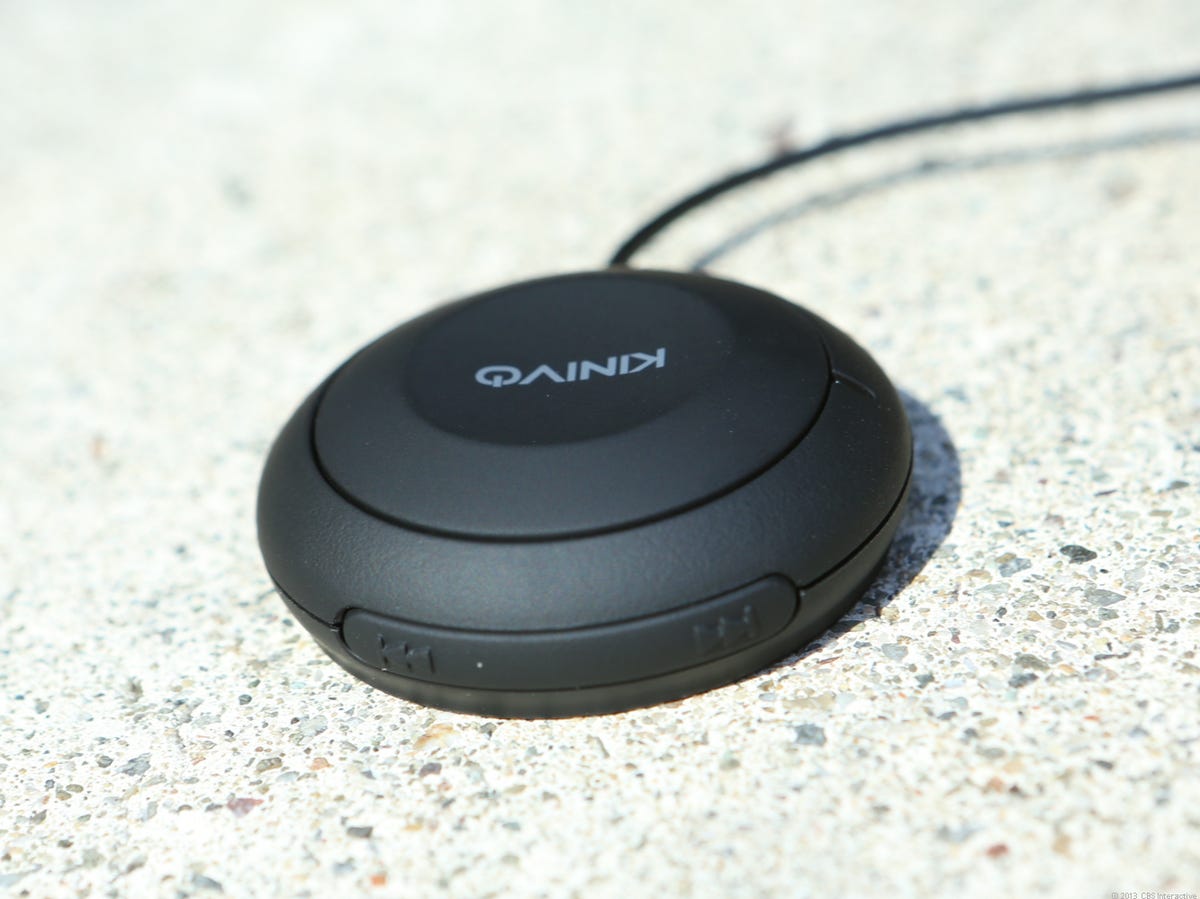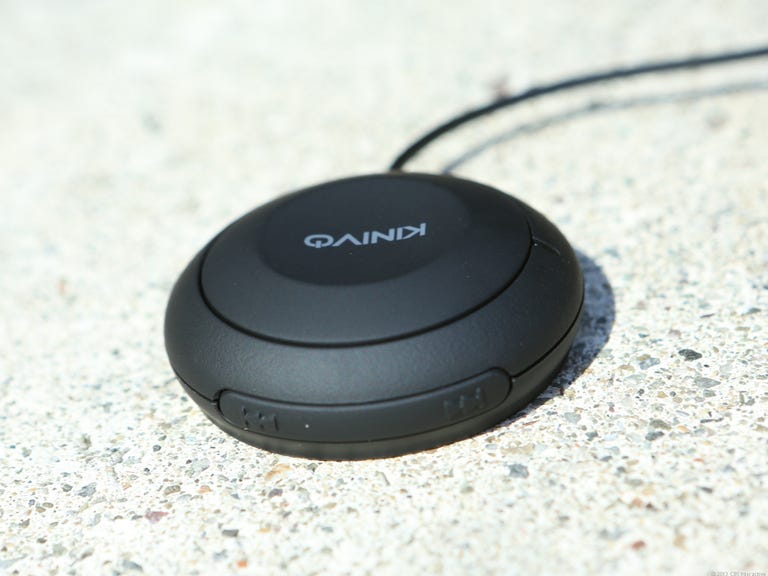 Why You Can Trust CNET
Why You Can Trust CNET Kinivo BTC450 review: Add hands-free calling, wireless music to cars
For cars without Bluetooth, but with an auxiliary input, the Kinivo BTC450 integrates phones for hands-free calling and wireless music through a painless Bluetooth connection.
The advent of Bluetooth systems in cars became a boon for drivers, enabling hands-free phone calls and wirelessly streaming music from a smartphone. But if your car is more than five years old, it likely does not feature this technology. The Kinivo BTC450 makes for an easy and inexpensive way of adding Bluetooth to an older car.
The Good
The Bad
The Bottom Line
The Kinivo BTC450 is a Bluetooth adapter. Lacking its own speaker, it is designed to plug into a car stereo's auxiliary input.
And therein lies its biggest limitation.
The majority of cars equipped with an auxiliary input but no Bluetooth system were made between about 2004 and 2010, so the Kinivo BTC450 is not likely to work with even older cars. However, there are ways of adding an auxiliary input to cars that don't have them, but that means adding more cost and complexity to this solution. In most instances, replacing the entire car stereo will be a cheaper and better option.
The little disc
The main component of the Kinivo BTC450 looks like a thick disc. Small enough to attach surreptitiously to a car's dashboard or console with the included Velcro pads, the device features a large button on top, and two smaller buttons on one side. Blue and red LEDs, shining through the surface of the main button, serve as indicator lights for pairing and other functions.
The disc end of the Kinivo BTC450 includes Bluetooth electronics and a microphone for making hands-free phone calls.

A permanently attached wire comes off the device and splits into two, one end terminating in a 1/8-inch audio plug and the other in an adapter for a car's 12-volt power point. That 12-volt adapter conveniently holds a USB port for charging phones or other electronics.
Unlike the GoGroove SmartMini Aux, which performs the same functions, the Kinivo BTC450 lacks a battery, so it must be plugged into a power point to work. That can present a problem for cars that keep power running to their 12 volt power points when the engine is off. Leaving the Kinivo BTC450 plugged into a car that sits parked for an extended period of time may end up draining the car's battery.
The main button on the Kinivo BTC450 serves a number of functions. It initiates phone pairing, works as a Pause and Play button for streaming music, and also answers or hangs up phone calls. It also activates voice command, such as Siri or Google Voice, for phones with that capability.
The two smaller buttons on the side let you skip forward or back a song when streaming music.
The Kinivo BTC450 lacks any native voice command features or a caller ID display.
Easy pairing
Testing the Kinivo BTC450 with an iPhone 5, the initial Bluetooth pairing went off without a hitch. I had to hold the main button down to put the device into pairing mode, then simply found it under the name BTC450 on the phone's list of found Bluetooth devices.
I was pleased that the Kinivo BTC450 automatically reestablished the Bluetooth connection when the phone was in range. As such, when I got into a car equipped with the device, music would begin streaming to the stereo automatically, starting from the track that was playing when I was last in the car.
The skip buttons worked as expected, with a just a slight delay typical of sending commands over Bluetooth.
The music playback sounded fine, with no interference from the Kinivo BTC450. In addition, there were no stutters or gaps in the stream, which can sometimes happen with Bluetooth streaming audio.
I was able to activate Siri through the device as well, the microphone picking up my commands for music playback or placing calls and accurately sending them to the phone. With a phone call initiated, the microphone performed well in picking up my voice. However, it also picked up cabin noise, as any microphone would.
Listening to the other party on a call, the sound came through the car's speakers unhindered or otherwise not degraded by the Kinivo BTC450. In fact, I have never found the iPhone to work particularly well as a handset, so I actually preferred using the Kinivo BTC450 in a car for calls.
Short on features
The Kinivo BTC450's chassis makes it easy and practical to install in a car, and the 12-volt plug with built-in USB charging port is a nice addition, as is the ability to skip songs. Considering the lack of an internal battery, however, an off switch would have been nice so as to ensure that it does not become a drain on a car's battery.
The device performed well for both phone calls and streaming music.
A built-in FM transmitter would make the Kinivo BTC450 useful in more cars, as only a limited set of models offer an auxiliary input. A display for caller ID and track information would have also been useful.


